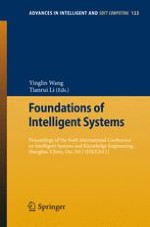Proceedings of the Sixth International Conference on Intelligent System and Knowledge Engineering presents selected papers from the conference ISKE 2011, held December 15-17 in Shanghai, China. This proceedings doesn’t only examine original research and approaches in the broad areas of intelligent systems and knowledge engineering, but also present new methodologies and practices in intelligent computing paradigms. The book introduces the current scientific and technical advances in the fields of artificial intelligence, machine learning, pattern recognition, data mining, information retrieval, knowledge-based systems, knowledge representation and reasoning, multi-agent systems, natural-language processing, etc. Furthermore, new computing methodologies are presented, including cloud computing, service computing and pervasive computing with traditional intelligent methods.
The proceedings will be beneficial for both researchers and practitioners who want to utilize intelligent methods in their specific research fields.
Dr. Yinglin Wang is a professor at the Department of Computer Science and Engineering, Shanghai Jiao Tong University, China; Dr. Tianrui Li is a professor at the School of Information Science and Technology, Southwest Jiaotong University, China.
